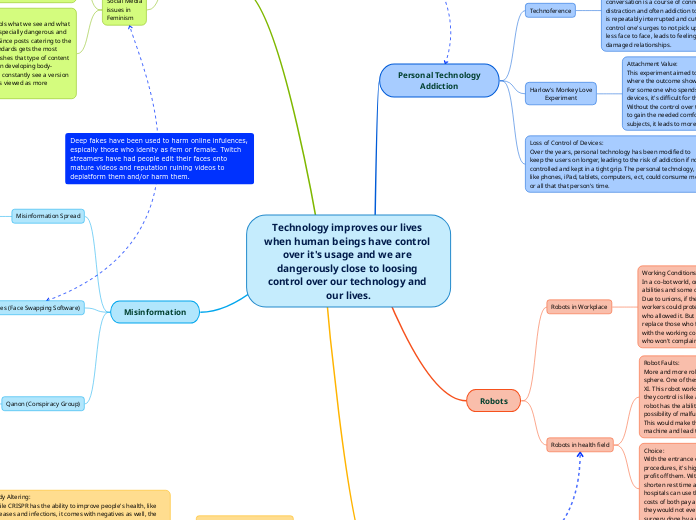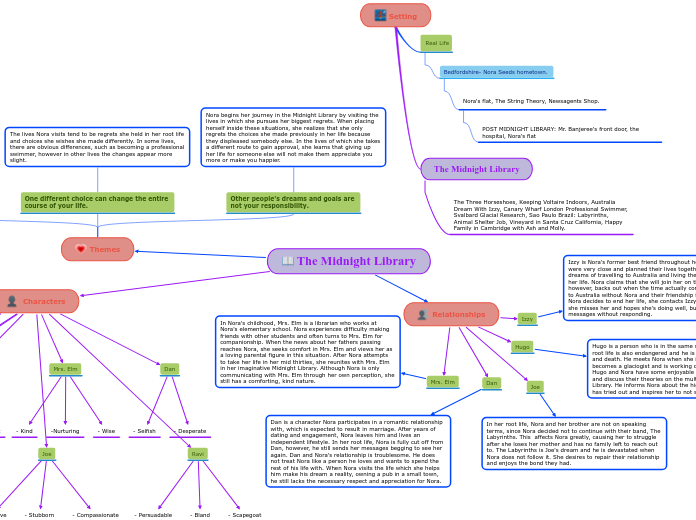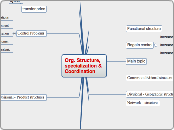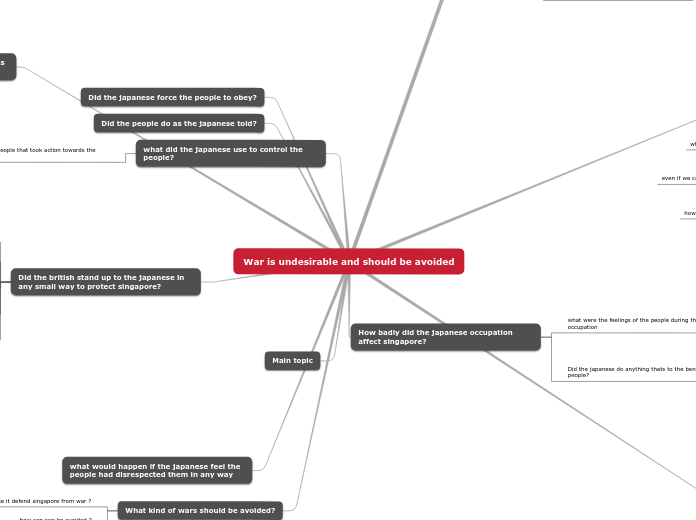Technology improves our lives when human beings have control over it's usage and we are dangerously close to loosing control over our technology and our lives.
Health
Telemedicine
Limited Doctor's Sight
With the rise of everyday internet access and with the covid-19 pandemic thriving, tele-medicine has gained popularity. While this is good for the pandemic, it's not an everyday solution. It doesn't guarantee the most accurate diagnoses or advice since the doctor can't see the person physically. The technology limits and controls what the doctor can see, since they have to rely on the patients word. If given the wrong advice, it can worsen the health of the patient.
CRISPR (Gene Alter Technology)
Body Altering:
While CRISPR has the ability to improve people's health, like diseases and infections, it comes with negatives as well, the fact that changing someone's gene is unpredictable and uncontrollable. Changing around genes could come with irreversible damages that can't be contained or controlled the same way we deal with illnesses.
Misinformation
Qanon (Conspiracy Group)
Pizza Gate:
Conspiracy theories are a type of misinformation but comes in a theory box, where one person says a hypothesis with or without evidence. Theories are often harmless until is spirals out of control. The most infamous theory was Pizza Gate, where a theory about Hilary Clinton running a child porn ring in a pizza place got so out of hand that someone brought a gun and raided the place. This put many people in danger, including the pizza place, for the soul reason of a conspiracy theory getting out of control.
Deep Fakes (Face Swapping Software)
Video Evidence and Reputations:
In regards to reputations and video evidence, someone can film themselves doing a negative action, like kicking a child, and edit it to show someone else, like a politician. It would ruin their image and reputation. This software is almost unnotiable, allowing for seamless swapping, but it takes away the control that the general public had. Video evidence was and still is fairly hard to forge, so the public was able to know that the video was true evidence, but with the software, the public no longer has that control on the verification on events.
Misinformation Spread
Misinformation and the Algorithm:
Misinformation is extremely hard to control. Algorithms push what gets the most clicks and likes, which is why flash and click-bait misinformation gets spread the most. People have no control whether they see it or not. Those who do believe the misinformation tend to be dead set on believing it, not willingly to hear why it's untrue. The biggest example of anti-vaxxers online show this, they find one misleading article, share it, and is set on believing it.
Feminism
Social Media
issues in
Feminism
Algorithms:
On Social Media, the algorithm controls what we see and what gets pushed. These algorithms are especially dangerous and harmful for young girls and women. Since posts catering to the male gaze and unhealthy beauty standards gets the most attention and views, the algorithm pushes that type of content out. This leads young girls and women developing body-dysphoria and body issues since they constantly see a version of a body they can never obtain and is viewed as more valuable than theirs.
Intersectionality:
The Algorithm often suppresses the content of women of color (WOC) , especially Black women. Their content is often blocked or taken down, often on the guise of showing 'too much nudity' or 'hate speech'. While both white women and men of color can post these videos no problem, Black, Indigenous, and women of color are often held to tight restrictions on videos.
As well, the beauty standards are often white women, something Black, Indigenous, and women of color are constantly reminded of and made extra insecure about.
Targeted Ads:
Targeted ads are also a danger. Social media companies collects users data to push ads designed for that specific user. For young girls and women, these targeted ads often play into their insecure, like body weight, body size, skin, features, ect. These become an issue when they are constantly bombarded with them, furthering body-issues and low self esteem, believing there is something wrong with them and that they need these products.
Fourth Wave Feminism:
This wave focused aspects such as body shaming, harassments, and social media.
Brings into light intersecontality
Robots
Robots in health field
Choice:
With the entrance of robots, specifically those that can do procedures, it's highly likely that hospitals will find ways to profit off them. With the Da Vinci XI, the creators say that it will shorten rest time and extra expenses. Private and even public hospitals can use these robots instead of doctors to cut back costs of both pay and rooms. And because these costs are cut, they would not even keep the choice of manual surgery or surgery done by a robot, taking away the patients control of choice over what they want with their body and health.
Robot Faults:
More and more robots are entering hospitals and the health sphere. One of these robots is a surgery robot called Da Vinci XI. This robot works like an extension for a surgeon, where they control is like an extra set of arms and hands. While the robot has the ability to eliminate human errors, it still has the possibility of malfunctioning or breaking down mid-procedures. This would make the human surgeon loose control over the machine and lead to new damages on the patient.
Robots in Workplace
Working Conditions:
In a co-bot world, or a no robot world, workers have or had the abilities and some control over the work conditions present. Due to unions, if the world conditions were horrible, the workers could protest to bring change and punish the owner who allowed it. But now with robots, the owner could simply replace those who fuss. If a worker try to point out any issues with the working conditions, they can be replaced by a robot who won't complain.
Personal Technology
Addiction
Loss of Control of Devices:
Over the years, personal technology has been modified to keep the users on longer, leading to the risk of addiction if not controlled and kept in a tight grip. The personal technology, like phones, iPad, tablets, computers, ect, could consume most or all that that person's time.
Harlow's Monkey Love
Experiment
Attachment Value:
This experiment aimed to test out attachment behaviors, where the outcome showed that we valued physical comfort. For someone who spends most of their time on their personal devices, it's difficult for them to get this physical comfort. Without the control over their devices, they don't get the time to gain the needed comfort, and if it's anything like the test subjects, it leads to more stress and anxiety.
Technoference
Mobile Device Wall:
Technoference is when face to face conversation is interrupted by technology, specifically our phones. Face to face conversation is a course of connection to many, but with the distraction and often addiction to our phones, this connection is repeatably interrupted and cut short. Without the ability to control one's urges to not pick up that phone, people interact less face to face, leads to feelings of being ignored, and damaged relationships.









